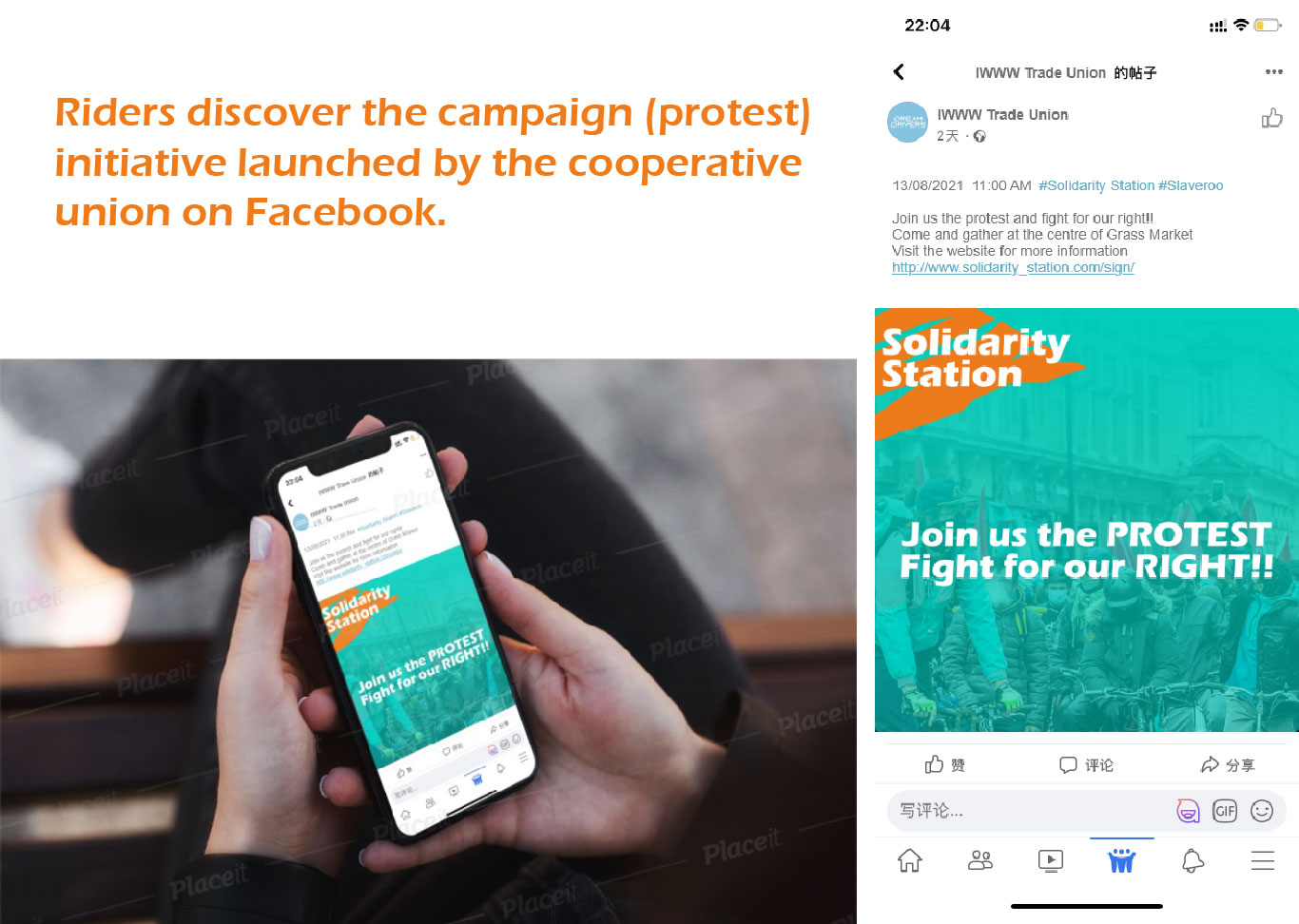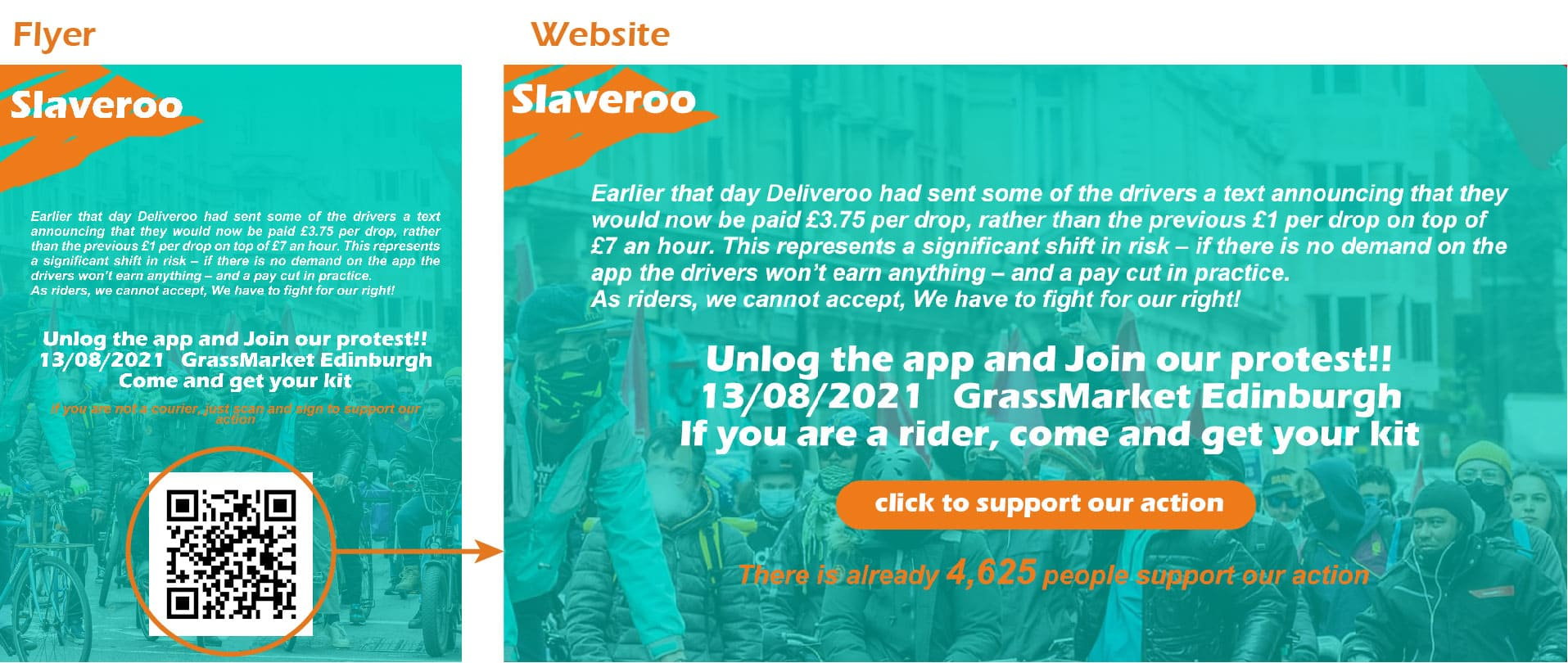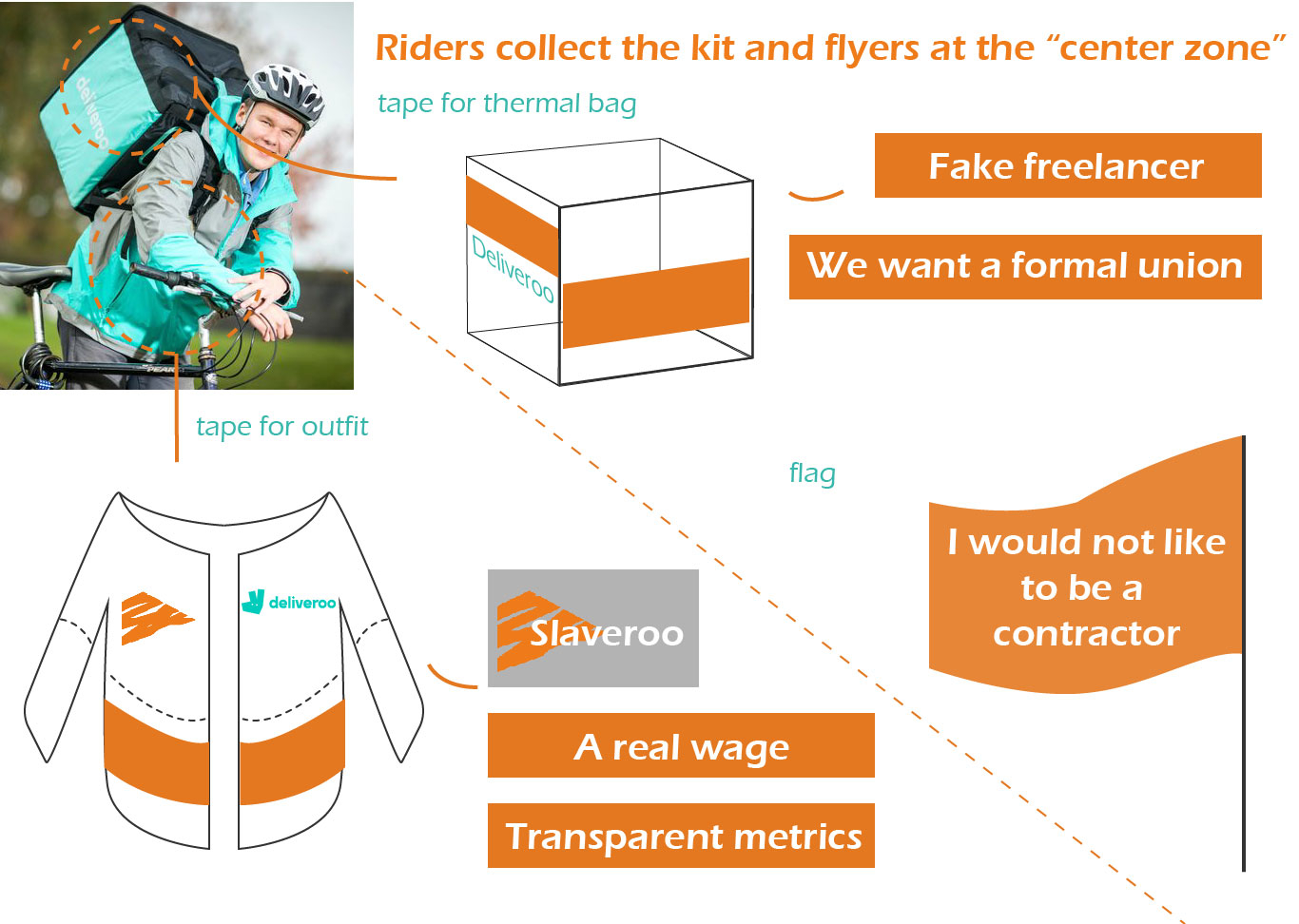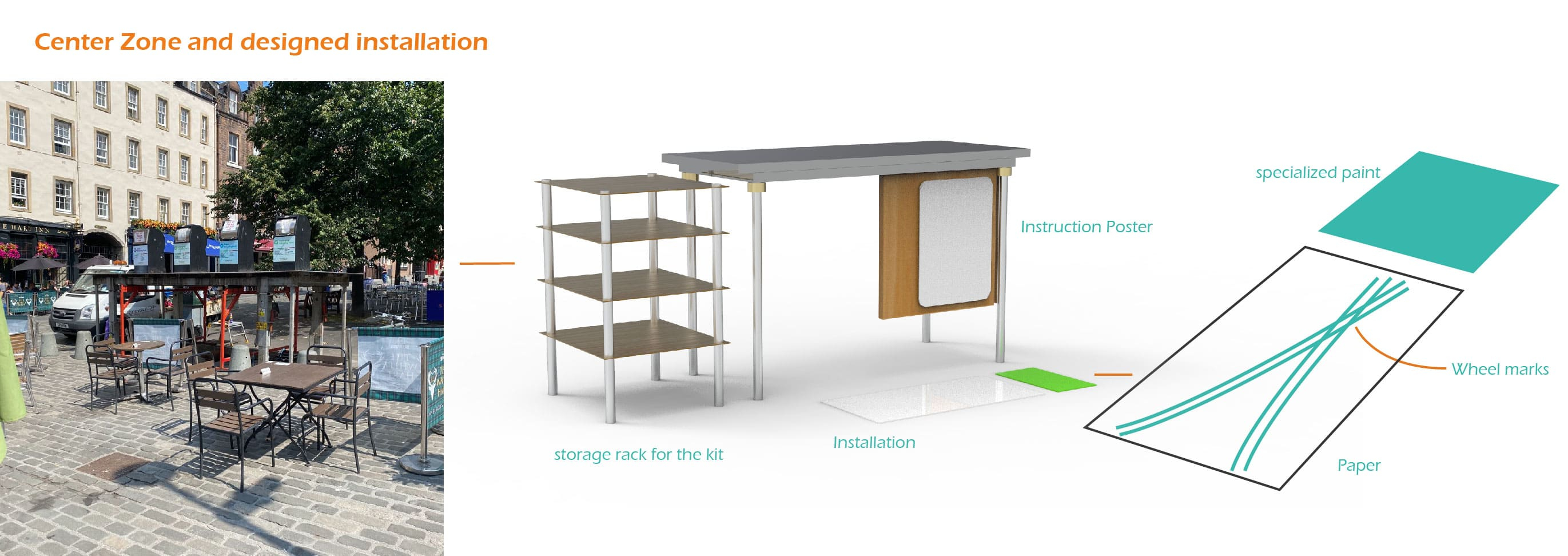Solidarity Station can be defined as a campaign composed of a supportive kit and a dissemination installation aiming to promote the protests (strikes) movement of on-demand food couriers, which helps the couriers to achieve their demand of better pay and working conditions.
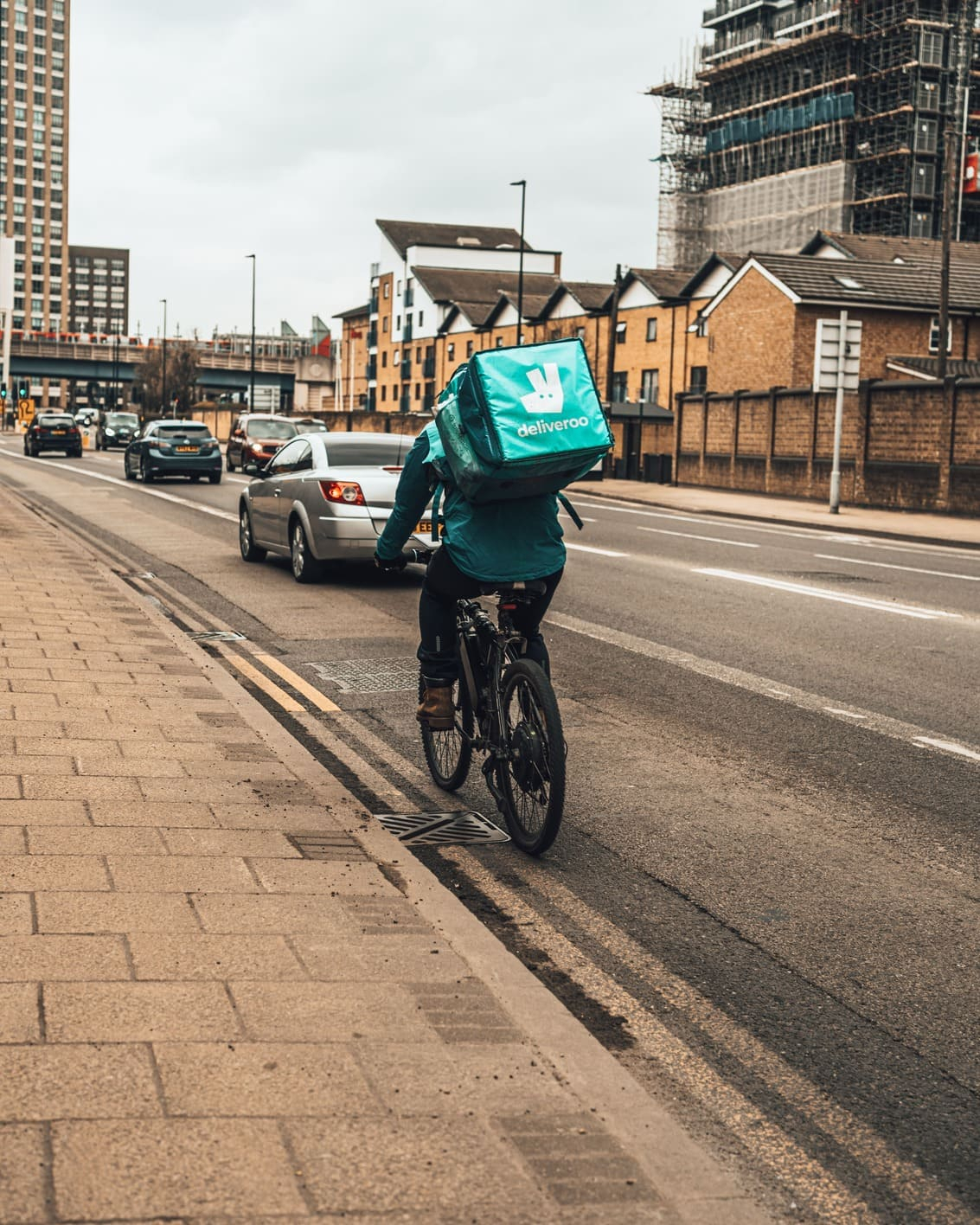

Project description
Context
Within a decade, food delivery platforms have gained popularity among urban dwellers in many cities (towns) across the world. These platforms have created new marketplaces connecting hungry customers with restaurants. And this business model has also radically reshaped the employment relationships of the couriers, who are identified as self-employed contractors .
Some labor scholars have argued that the use of self-employment allows the platforms to evade responsibility for workers. Workers are forced to confront the market directly, without the protection of contractual arrangements, absorbing the risks and precautions that employees previously shouldered. Food couriers face lowering living wage pay with no holiday, illness, and maternity leave. Ratings and biased reviews that play a significant role in determining the income also make food couriers anxious and frustrated.
Since 2016, a series of dramatic protests (strike) named #Slaveroo erupted in several major cities in Europe. These protests were mainly against the newly introduced payment system by two food delivery platforms: Uber Eat and Deliveroo, which received much press attention and arose a great deal of public discussion.
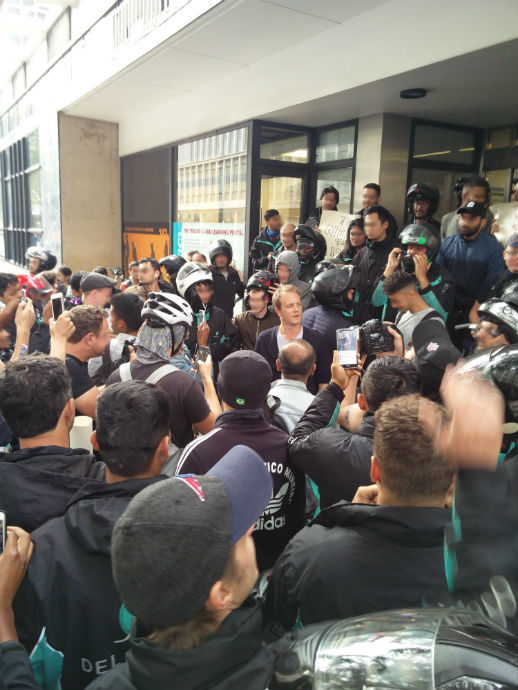
Research
Survey
To better understand how couriers take up and experience food delivery work, interviews were conducted with 7 workers. In the early days, interviewees were recruited on the media channel-Facebook group (Messenger). The interview questions designed to stimulate discussion fell into three categories. First, the subjective views on working conditions, second, the worst experience you have heard being an on-demand courier, finally, how the platform structure and organize the work process. I also conducted a shadowing of a working day of a courier who I encountered in the Grass market. During these processes, in-depth awareness of the riders' working life was comprehensively formed.
Literature support
In addition to the primary survey, I referred to a large amount of material including published labor reports, academic essays, and news, which mainly focus on the true challenges the riders face, the algorithmic approaches the platforms adopt to manage their riders, and the experience of the previously organized protest.
Insight
Platforms’ poor communication is bothering the food couriers. For riders, it takes huge efforts to contact the officers of the platform. In contrast, platforms are more willing to listen to customers’ points of view,
Riders kept complaining about the non-transparent management that forges information asymmetries, which can disable the ability of a rider to make rational decisions
The downtime becomes one of the hazards of the job. In the downtime, all a rider can do is waiting for the next order, which could be boring and stressful since the company does not pay for the time in-between orders.
Collective action empowers workers in two important ways. First, collective action increases negotiation power for workers. Second, collective action may also enable workers to deconstruct the platform’s match-making and allocation algorithm and gain greater agency.
The formalization of interaction among riders increases the intensity of collective action to resist the digital platform, partly because the strength of identification with a group is an important determinant of unionization. And the inability to connect and develop social relationships has prevented the organization of large-scale collective action
The characteristics of the job constrain the extent that platform workers can develop enduring social connections—at least in comparison to those in more traditional employment arrangements, which further constrains the organization of collective action (bargaining).
Objectives
By experiment with a new form of mobilization that combines “traditional” tactics, such as strike, I intend to increase the visibility of the rider’s group and the disputes to attract public support as well as to enable collective action at scale, both in terms of scope and member.
Main Feature
The project can be divided into three main components:
- A kit for increasing the visibility of the protestors (riders).
- A flyer that can extend the impact of the project, which can lead the recipients to a webpage that collect the signature of supporters
- An installation that allows riders to leave their wheel marks on aiming to show the scale of the protest
And all these components are set in a common propaganda area located at the “zone center” in order to attract more participants.
Participant Journey
Riders discover the campaign (protest) initiative launched by the cooperative union on Facebook.
Riders collect the kit and flyers at the “center zone”, meanwhile leave their wheel marks on the designed installation.
Riders stage protests around the city holding flying pickets. They go through restaurants and squares handing out flyers to restaurants owners, members of the public, and other uninformed riders.
The recipients scan the QR code on flyers to visit the web page expressing support to the campaign or visit the center zone according to the instructions on the flyers.
